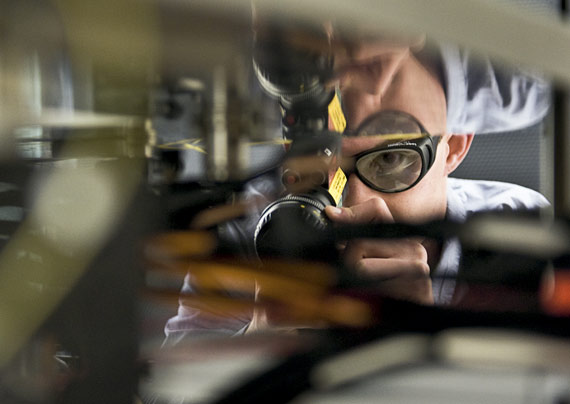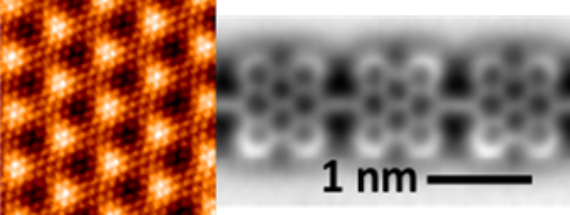The rapid lifestyle changes that our society has experienced, generally motivated by advances in science and technology, have created false optimism that has led to a feeling of omnipotence. Nowadays, it seems like everything is possible, and this perception leads us to affirm that any trip that mankind can imagine will end up taking place. Historically, this has been true. However, we must accept that there are places that are unreachable to humans, as a result of their limitations as a species and related to their size, chemical structure and lifespan. Humanity has been able to transport itself to inaccessible places through reason, using (more or less realistic) simulations that utilize the scientific knowledge that is available.
Many of these trips are related to the universe – that vast empty space, where it is nearly impossible to find the physical conditions of pressure and temperature that are adequate to sustain the life of a human being. But there is another trip that can be taken with knowledge and reason – the trip that takes us to the inside of matter. Humans will never be able to reduce their size, like they do in some science fiction books, to become a microscopic being that lives with bacteria and microbes. In this article, we are going to propose an imaginary trip through different images that transports us to hidden places governed by laws that are very different from ours. This is the world of atoms – the bricks that, together with the emptiness that surrounds them, build the reality in which we live.

What is there beyond what our eyes are able to see? Or, what are the final elements of which we are made? These are some of humanity’s atavistic questions. I think that understanding matter and where it resides (the void) has been one of the most exciting adventures of human knowledge, as one great thinker or scientist after another have refuted or accepted the preceding speculations from experiments and demonstrations. Constructing the current idea of an atom and the void has been taking shape for more than 20 centuries, closing dead ends and opening others that are capable of generating technology based on these concepts. However, the most exciting, is that this adventure in knowledge is not yet over.
The question of whether the void (emptinesses) can exist is not trivial and can only be answered in relation to its antithesis: matter. For this reason, both concepts have evolved together. The answer to the question of what exists where there is no matter is not a simple one. It poses an intellectual challenge that has inspired philosophers, scientists and artists from earliest days of thought.

Aristotle was one of the first thinkers to present a model to explain what we are made of. Based on five elements, his theory concluded that emptiness cannot exist, as he believed that matter was supported in an invisible structure, without which reality would collapse. If a microscopic space were empty, it would immediately be filled by an invisible element, which he called aether. For Aristotle and his followers, this substance floods nature like a liquid, penetrating it as water penetrates a sunken ship.
Therefore, he reached a conclusion that has lasted until today with its Latin term: “horror vacui”, expression that refers to the fact that nature intends to fill all available space. In parallel to him, in the Greek world, there were other thinkers who were unnoticed at the time, such as Democritus and Leucippus (5th Century BC) who postulated that all matter is made of countless corpuscles or imperceptible, identical indivisible and indestructible atoms, which differ from each other in terms of their size, shape and position and are in movement in an infinite void. The Aristotelian vision led to that of Democritus as the concept of “horror vacui” was easily understood, and managed to explain processes as important as suction.

The existence of a void as a place without matter was not established until the 17th Century, interestingly much earlier than the concepts of atom and molecule, which were settled in the early 20th Century. Void technology made it possible for the design of both instruments and fundamental experiments (such as the cathode ray tube which was used to discover the electron), which led to understanding of the structure of this matter. Thanks to these instruments, the idea of the five Aristotelian elements was debunked, and they were replaced by the Democritus atomic model. It is surprising that an entelechy, such as the concept of the void, or even of the atom, was capable of transforming our society so substantially. Science and void technology have made it possible to improve how food is preserved, new pharmaceuticals are developed, and how most electronic devices are manufactured. In fact, it was inside some vials in which a void had been created where the first light bulbs were lit. And then, based on the quantum description of the atomic world, microelectronics arrived, and more recently, nanotechnology.
The current atomic model was established during the first half of the 20th Century within the framework of what is called quantum mechanics. It was then clear that the atom suggested by Democritus was actually much more complex and governed by laws that escaped our logic. Accepting them was the only option. It seems impossible that a corpuscle can “be or not be”, or be a “wave and corpuscle” at the same time, and that we can only discover this through statistical probability. Quantum theory seemed like a mathematical entelechy and yet, it was capable of explaining the majority of scientific experiments. Later, in the mid-20th Century, the technology derived from such a fundamental science emerged and microelectronics was born. Can we imagine society today without electronics?

Today, we have gone even further, and are even managing to manipulate atoms and molecules in what is known as nanoscience and nanotechnology: a discipline capable of working with objects on a nanometer scale (from 0.1 to 100 nanometers, or from one atom to the size of a virus), and uniting them, as if they were bricks to build new materials. This discipline seeks to exploit the new properties (physical, chemical, biological, mechanical, electric, etc.) that emerge as a result of such a reduced scale. If, on that imaginary trip we mentioned at the beginning of the article, we reduced our size to the nanometric world, we would not understand anything that took place there, as the properties of these objects are not predictable using our logic. Our intuition is based on the experience we acquire as human beings living in a world in which relevant distances and objects are between 0.01 meters and 10 meters.
In order to develop nanotechnology, new microscopes such as the scanning tunneling microscope had to be discovered, as they allow us to see the unaltered atoms of many materials. It is interesting that a microscope can be built based on such an apparently abstract concept like the tunnel effect – a purely quantum process based on the wave nature of matter. In order to apply quantum physics and be able to see the atoms of some materials, the ingenuity of the inventors of this technique, G. Binning and H. Rohrer, was recognized with a Nobel Prize in Physics in 1986. They made it possible to “see” atoms – the dream of many physicists – with this microscope, as well as others that emerged later. For several years, an evolution known as non-contact atomic force microscopy (nc-AFM) made it possible to make the dream of many chemists come true; to see in detail the carbon rings that Kekulé had drawn at the end of the 19th Century (he himself said that this was after daydreaming about a snake biting its tail).

Left: photograph obtained with a scanning tunneling microscope. Each one of the small dots is a carbon atom from a graphene sheet. Right: photograph of a polymer obtained from a non-contact atomic force microscope (nc-AFM). Images courtesy of the groups Nanosurf Lab and ESISNA.
Both the larger sizes, the cosmic distances, and the smaller ones, atomic measurements, are inconceivable for our minds that are trained to understand our scale of sizes. These two extreme concepts come together on one point: both the galaxies and atoms exist in a space void of matter. We began this article looking at space. The Earth is nothing more than a small planet in the solar system that moves through the galaxy through the void. On the other hand, if we look at our interior, we find our atoms, which are really nothing more than an extremely wide empty extension between electrons and the nucleus. They say that if an atom were the size of a soccer field, the atomic nucleus would be like a garbanzo placed in the middle, and the electrons like pin heads. We can imagine ourselves, on an atomic scale, as an endless succession of elections and nuclei, “pins and garbanzos”, separated by distances like that of a stadium and levitating in the void. However, at the same time, it is wonderful to think that the combination of this sequence of “floating garbanzos” leads to all of the diversity we find in nature. They always say that human life takes place in between two “voids” (that of their birth and that of their death), but it is also possible to reinterpret this expression, accepting that we are confined to the Earth between the emptiness of the cosmos and the quantum emptiness of our atoms. Emptiness should be something normal for human beings, as it is the most accurate picture of the universe and of our existence, and still, it terrifies us.
Comments on this publication